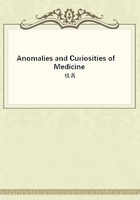
第38章
That there were medical writers before the time of Hippocrates cannot be doubted, and that the works ascribed to the "Father of Medicine" were immediately followed by those of other physicians, is likewise not to be questioned; but whilst nearly all the writings prior to and after Hippocrates have been long lost to the world, most of those that were written by the Coan physician and his followers have been almost miraculously preserved. As Littre puts it, "Les ecrits hippocratiques demeurent isoles au milieu des debris de l'antique litterature medicale."--(Ballantyne.)The first to be considered is the transmission of contagious disease to the fetus in utero. The first disease to attract attention was small-pox. Devilliers, Blot, and Depaul all speak of congenital small-pox, the child born dead and showing evidences of the typical small-pox pustulation, with a history of the mother having been infected during pregnancy. Watson reports two cases in which a child in utero had small-pox. In the first case the mother was infected in pregnancy; the other was nursing a patient when seven months pregnant; she did not take the disease, although she had been infected many months before.
Mauriceau delivered a woman of a healthy child at full term after she had recovered from a severe attack of this disease during the fifth month of gestation. Mauriceau supposed the child to be immune after the delivery. Vidal reported to the French Academy of Medicine, May, 1871, the case of a woman who gave birth to a living child of about six and one-half months' maturation, which died some hours after birth covered with the pustules of seven or eight days' eruption. The pustules on the fetus were well umbilicated and typical, and could have been nothing but those of small-pox; besides, this disease was raging in the neighborhood at the time. The mother had never been infected before, and never was subsequently. Both parents were robust and neither of them had ever had syphilis. About the time of conception, the early part of December, 1870, the father had suffered from the semiconfluent type, but the mother, who had been vaccinated when a girl, had never been stricken either during or after her husband's sickness. Quirke relates a peculiar instance of a child born at midnight, whose mother was covered with the eruption eight hours after delivery. The child was healthy and showed no signs of the contagion, and was vaccinated at once. Although it remained with its mother all through the sickness, it continued well, with the exception of the ninth day, when a slight fever due to its vaccination appeared. The mother made a good recovery, and the author remarks that had the child been born a short time later, it would most likely have been infected.
Ayer reports an instance of congenital variola in twins.
Chantreuil speaks of a woman pregnant with twins who aborted at five and a half months. One of the fetuses showed distinct signs of congenital variola, although the mother and other fetus were free from any symptoms of the disease. In 1853 Charcot reported the birth of a premature fetus presenting numerous variolous pustules together with ulcerations of the derm and mucous membranes and stomach, although the mother had convalesced of the disease some time before. Mitchell describes a case of small-pox occurring three days after birth, the mother not having had the disease since childhood. Shertzer relates an instance of confluent small-pox in the eighth month of pregnancy. The child was born with the disease, and both mother and babe recovered.
Among many others offering evidence of variola in utero are Degner, Derham, John Hunter, Blot, Bulkley, Welch, Wright, Digk, Forbes, Marinus, and Bouteiller.
Varicella, Measles, Pneumonia, and even Malaria are reported as having been transmitted to the child in utero. Hubbard attended a woman on March 17, 1878, in her seventh accouchement. The child showed the rash of varicella twenty-four hours after birth, and passed through the regular coarse of chicken-pox of ten days'
duration. The mother had no signs of the disease, but the children all about her were infected. Ordinarily the period of incubation is from three to four days, with a premonitory fever of from twenty-four to seventy-two hours' duration, when the rash appears; this case must therefore have been infected in utero.
Lomer of Hamburg tells of the case of a woman, twenty-two years, unmarried, pregnant, who had measles in the eighth month, and who gave birth to an infant with measles. The mother was attacked with pneumonia on the fifth day of her puerperium, but recovered;the child died in four weeks of intestinal catarrh. Gautier found measles transmitted from the mother to the fetus in 6 out of 11cases, there being 2 maternal deaths in the 11 cases.
Netter has observed the case of transmission of pneumonia from a mother to a fetus, and has seen two cases in which the blood from the uterine vessels of patients with pneumonia contained the pneumococcus. Wallick collected a number of cases of pneumonia occurring during pregnancy, showing a fetal mortality of 80 per cent.
Felkin relates two instances of fetal malaria in which the infection was probably transmitted by the male parent. In one case the father near term suffered severely from malaria; the mother had never had a chill. The violent fetal movements induced labor, and the spleen was so large as to retard it. After birth the child had seven malarial paroxysms but recovered, the splenic tumor disappearing.
The modes of infection of the fetus by syphilis, and the infection of the mother, have been well discussed, and need no mention here.